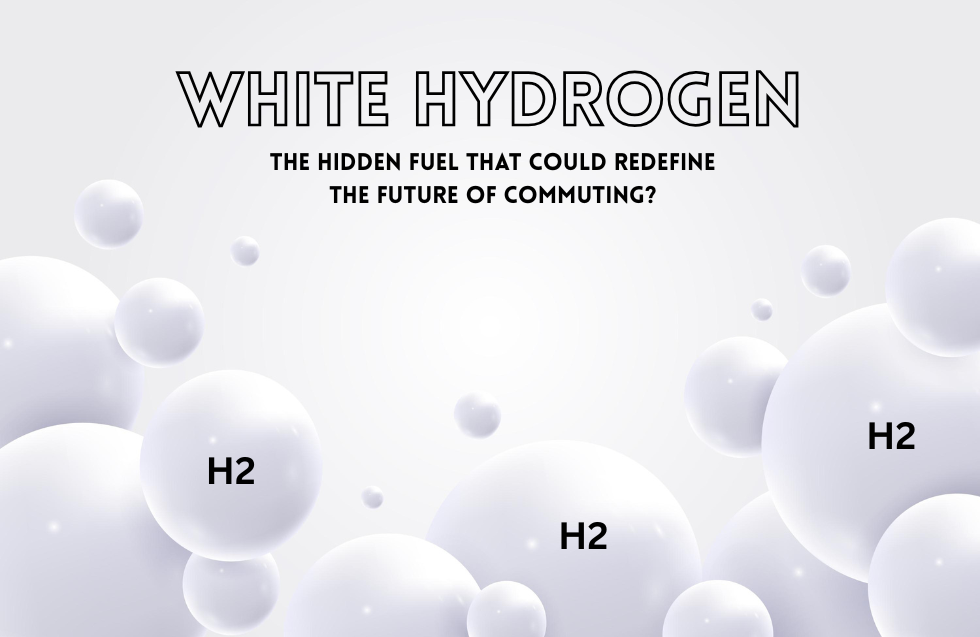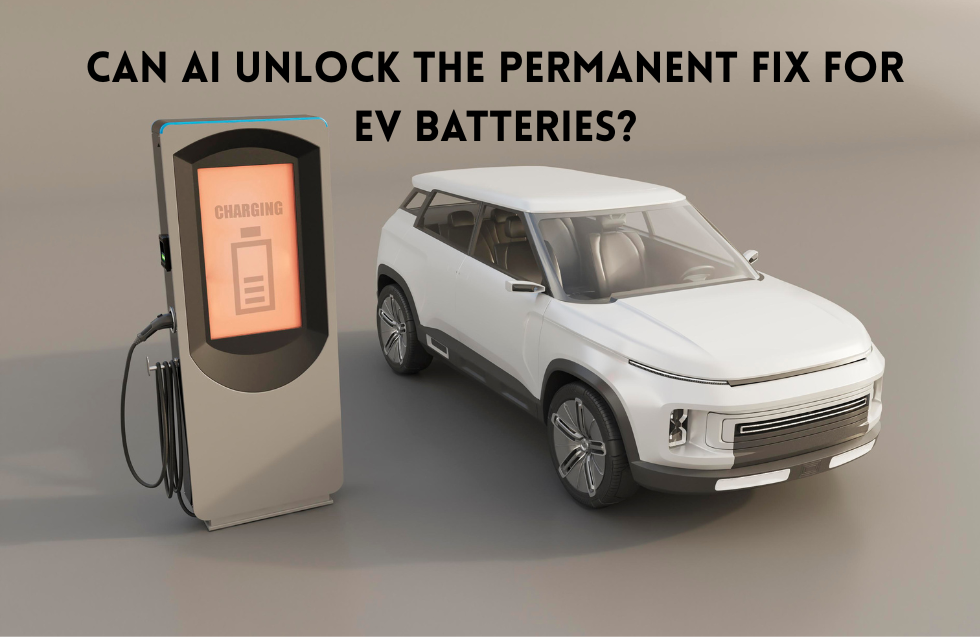As countries race to limit carbon emissions and do away with fossil fuels in favor of cleaner fuel alternatives, the energy world is changing at breakneck speed. Solar, wind and electric cars are getting the majority of newspaper space, but a new energy option is pulling a slow reveal “white hydrogen”. Unlike green or blue hydrogen, white hydrogen occurs naturally within the earth. It forms underground through geological processes and is now bubbling beneath the surface, waiting to be tapped.
Scientists are calling it the “missing piece” of clean energy. If harnessed effectively, white hydrogen could transform industries, especially transportation. Could this secret fuel redefine the way we commute? Let’s find out.
Let’s explore what makes white hydrogen so promising, where it occurs and why it could revolutionize the way we move around.
What is White Hydrogen?
White hydrogen is hydrogen gas that exists in nature and becomes stored under the Earth’s crust. In contrast to green hydrogen (generated by renewable energy) or blue hydrogen (created from natural gas with carbon capture), white hydrogen occurs naturally in geological processes and flows into underground reservoirs.
Is white hydrogen a gas?
Yes, It’s molecular hydrogen (H₂) which is colorless, odorless and highly flammable. Researchers initially found large natural hydrogen flows in Mali, West Africa, where residents had unwittingly been using it for decades as a source of energy. This renewed interest worldwide placed white hydrogen as a clean, ready-to-use fuel alternative.
How is White Hydrogen Created?
White hydrogen is created in a variety of natural processes far beneath the earth’s surface. Serpentinization is one of the most prevalent. It is the chemical reaction between water and iron bearing rocks that results in hydrogen. It may also be caused by the radioactive decay and breakdown of organic compounds within certain geological structures. In contrast to green hydrogen, which uses enormous quantities of water and electricity for electrolysis, white hydrogen already exists naturally. This translates into extraction instead of production as the primary concern.
Hydrogen Types Comparison
| Hydrogen Type | How It’s Made | Carbon Footprint | Cost Level |
| Grey Hydrogen | From natural gas without carbon capture | High | Low |
| Blue Hydrogen | Natural gas + carbon capture | Medium | Medium |
| Green Hydrogen | Electrolysis using renewable power | Low | High |
| White Hydrogen | Naturally occurring underground | Very Low | Potentially Low |
White Hydrogen Deposits Around the World
One of the most thrilling things about white hydrogen is that deposits have already been discovered all around the globe.
- Mali (Bourakébougou): Initial large-scale discovery where natural hydrogen was fueling local power.
- Australia: Headquarters of Gold Hydrogen Ltd., which is developing huge reserves.
- France (Moselle region): 46M tonnes worth $92B (2025).
- U.S. Kansas: HyTerra drilling, 92% hydrogen concentration (2025).
- Colombia: Confirmed its first-ever white hydrogen discovery in 2025, marking a milestone for Latin America.
A white hydrogen deposits map would show that while we’ve only scratched the surface, the global spread suggests vast untapped reserves. Experts estimate trillions of tons may exist underground, enough to power the world for centuries if extraction is efficient.
Also Read About : Lab-Grown Gold: The Future of Wealth? Why Smart Investors Are Betting Big in 2025
White Hydrogen in India: Opportunities & Challenges
India’s aspiration of becoming a hydrogen hub has just got bigger! In 2025, India’s Geological Survey (GSI) confirmed the country’s first natural hydrogen reserves off the coast of South Andaman. Initial studies indicate that India might be sitting on a massive resource of unused natural hydrogen reserves, across multiple regions including the Dharwar craton, Singhbhum craton, Andaman ophiolites and Gondwana basins.
But one of the difficulties to investigate and extract white hydrogen is that it is costly. The technology is relatively new and the government has not created the necessary infrastructure (i.e., refueling systems, pipelines) to scale the industry at this time.
However, it is the right time. The National Hydrogen Mission and the many partnerships between global multinational corporations and Indian institutes are ramping up investment and interest. If India can unlock its natural hydrogen safely and cheaply, not only will it reduce dependence on imports of crude oil and petroleum products but it may also be in a position to compete in the global clean energy race.
White Hydrogen Firms Pioneering the Charge
A number of trailblazing firms are competing to commercialize white hydrogen:
- Gold Hydrogen (Australia) – prospecting reserves in South Australia.
- Helios Aragon (Spain) – piloting projects in Europe.
- Natural Hydrogen Energy (U.S.) – spearheading North American exploration.
- QNB Metals (Canada): Acquired claims and hydrogen detection technology in Quebec (2025).
- Thor Energy (UK): Acquired Go Exploration Pty Ltd, a hydrogen and helium explorer in South Australia (2025).
These early players are drawing serious investment from governments and private sector players keen to tap hydrogen’s potential.
Gold vs White Hydrogen: The Comparison
Why equate hydrogen with gold?
In the same way as gold, white hydrogen is rare, valuable and potentially paradigm-changing. In fact, that some experts refer to it as “gold 2.0,” not because it is a metal, but because the discovery has the potential to change economies and energy markets like gold did centuries ago.
Whereas gold is a wealth store, white hydrogen might be a store of clean energy powering cars, airplanes and industries with zero emissions.
Applications of White Hydrogen in Daily Life
The everyday use of white hydrogen is immense, particularly for transportation and commutation:
- Hydrogen-powered cars and buses – with longer ranges than most electric vehicles.
- Trains and aircraft – there are trials of hydrogen-powered rail travel and aviation.
- Generating electricity – natural hydrogen can provide clean power to grids.
- Industrial processes – steel production, production of fertilizers and chemical industries.
- Energy storage – storing renewable energy as hydrogen for future usage.
The Future of Commuting with White Hydrogen
Imagine the future when buses, trains and planes use hydrogen drawn straight from the planet. White hydrogen might just make this a reality.
- Hydrogen cars vs. EVs: Hydrogen cars fill up quicker and travel farther, although there’s still a lack of infrastructure.
- Policy support: Governments must invest in refilling stations, pipes and exploration initiatives.
- Barriers: Technical obstacles in the safe extraction and storage persist. But if these are conquered, white hydrogen has the potential to be the foundation of zero-emission commutes in the next few decades.
Challenges and Limitations
Even with its potential, white hydrogen has some challenges:
- Cost of exploration: Discovery and drilling for hydrogen is costly.
- Infrastructure issues: There is currently a tremendous shortage of refueling stations.
- Safety issues: Hydrogen is highly flammable and care must be exercised.
- Environmental issues: Any large scale extractions must be assessed for potential environmental implications.
Future Market Trends for White Hydrogen (2025)
There are positive signs of momentum:
- Industry Growth: White hydrogen is a $1.7B investment (summit 2025).
- Market Forecasts: Both countries (the U.S., Australia, Oman and the UAE) will see their predicted production costs drop below $1/kg.
These advancement suggests that commercial viability may arrive sooner than expected.
FAQs
Q1: Where are white hydrogen deposits located?
Large deposits are found in Mali, Australia, U.S., France and Spain and they are more likely to be undiscovered globally.
Q2: What are the main uses of white hydrogen?
Transport fuel, electricity generation, industrial uses and long term energy storage.
Q3: Which companies are pursuing white hydrogen?
Gold Hydrogen (Australia), Helios Aragon (Spain) and Natural Hydrogen Energy (U.S.) are among the early pioneers.
Q4: Is white hydrogen truly the fuel of the future?
It possesses great potential, but it will be scaling up to extract and build infrastructure that makes its place in future energy systems.
Q5: Is white hydrogen a gas?
Yes, it’s natural hydrogen gas stored underground which is clean, invisible and highly flammable.
Q6: How is it different from green hydrogen?
White hydrogen occurs naturally. Green hydrogen has to be produced using renewable energy and water.
Conclusion
White hydrogen could be the quiet fuel that the world has been looking for. This form of hydrogen is approaching ubiquitous proliferation, being naturally abundant and carbon free. This hydrogen form has a versatility that could transform not only commuting behaviour but global energy systems. The hurdles to discovery, extraction and the required infrastructure are significant and unsolved, but the case for going forward also is compelling.
As governments, researchers and corporations race to bring white hydrogen to scale, it’s apparent that we could be on the brink of the clean energy revolution the future needs.












